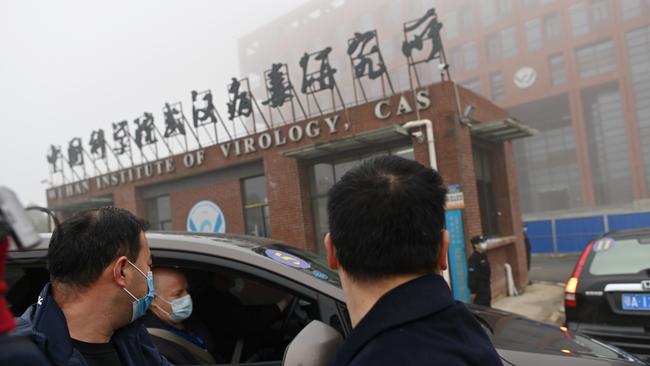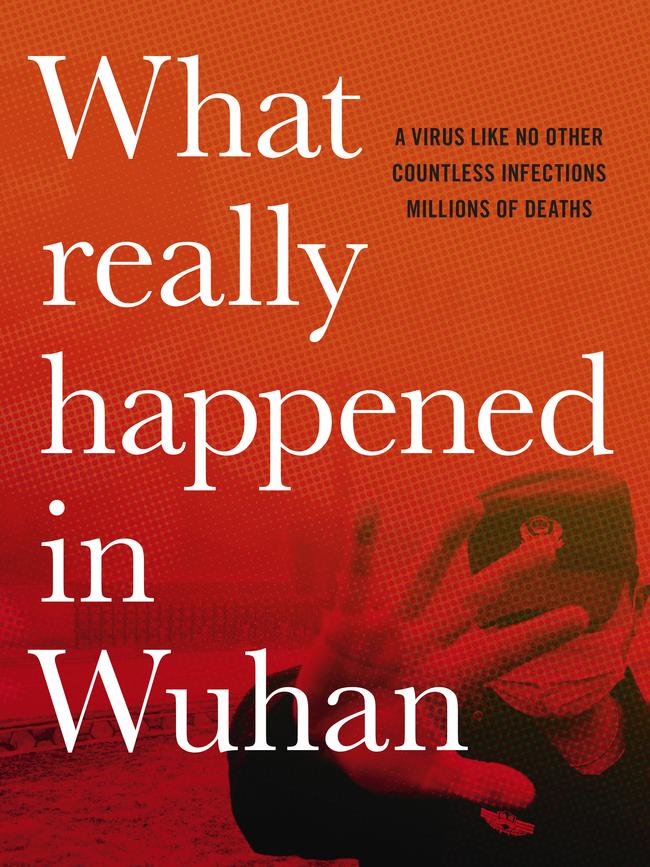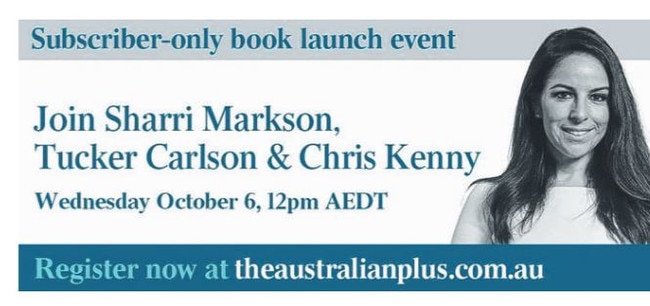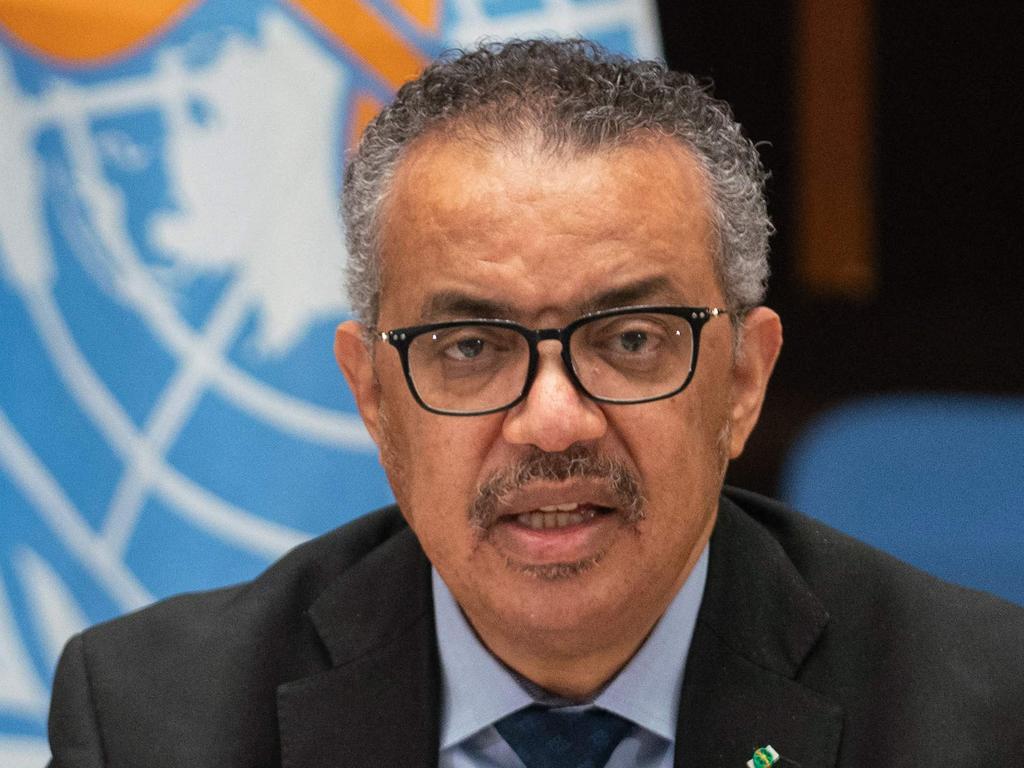Controlling the Wuhan Covid-19 narrative
A seminal letter to The Lancet about the origins of Covid had strong ties to the Wuhan lab.

Gary Ruskin is an old-time investigative public interest researcher.
The grey-haired, bespectacled father ran a group against corruption in the US congress for 14 years and has more recently dedicated his time to focus on pesticides and genetically modified foods.
In 2014, Ruskin set up an organisation called US Right to Know, a non-profit investigative public health group. He led a campaign for GMO foods to be labelled. A topic such as the origins of Covid-19 wasn’t exactly on his hit list when 2020 rolled in.
But Ruskin sat back and watched as there was no satisfactory investigation into the origins of the virus by either world health authorities or the media through the start of 2020.
By April, Ruskin wondered if it might be time to turn his attention to the origins of the pandemic. To do his small part, as he puts it.
In fact, his role in exposing shocking conflicts of interest among some of the scientists who promulgated the natural-origin theory would turn out to be crucial. He began filing dozens of Freedom of Information requests for documents relating to the origins of the virus. “We didn’t know what we would get or if there would be anything useful in it at all. And I was ready to file six months of requests and get nothing and think, ‘Well, you know, it was worth a try’,” Ruskin says.
It wasn’t long before he had a breakthrough. In November 2020, a batch of 466 pages of emails from the University of Maryland came through from an FOI request.
Those documents exposed for the first time EcoHealth Alliance president Peter Daszak’s conflicts of interest. The emails dated back to February 2020, when the gravity of the virus was on the cusp of beginning to be understood.
That month, the esteemed medical journal The Lancet published a letter signed by 27 leading scientists saying that this virus originated from animals.
It also accused those questioning whether the virus was from a laboratory of spreading “misinformation”. The letter said: “We are public health scientists who have closely followed the emergence of 2019 novel coronavirus disease (Covid-19) and are deeply concerned about its impact on global health and wellbeing … The rapid, open, and transparent sharing of data on this outbreak is now being threatened by rumours and misinformation around its origins. We stand together to strongly condemn conspiracy theories suggesting that Covid-19 does not have a natural origin.”

The letter went on: “Conspiracy theories do nothing but create fear, rumours, and prejudice that jeopardise our global collaboration in the fight against this virus. We support the call from the Director-General of WHO to promote scientific evidence and unity over misinformation and conjecture.”
The emails Ruskin obtained showed this letter was organised by a group called the EcoHealth Alliance, which was funnelling National Institutes of Health grants to the Wuhan Institute of Virology.
Daszak was the co-author on many of Wuhan Institute virologist Shi Zhengli’s research papers, and his group, EcoHealth Alliance, funded and participated in her bat-sampling research.
The emails released under FOI show Daszak wrote the first draft of The Lancet statement. Two of the other scientists who signed the letter, Rita Colwell and James Hughes, are members of the EcoHealth Alliance board of directors, while William Karesh is the group’s executive vice-president for health and policy, and Hume Field, an honorary professor of the University of Queensland, is science and policy adviser.
In total, of the 27 who signed the statement, seven were affiliated with EcoHealth Alliance, four had current or previous affiliations with the Wellcome Trust, Ralph Baric had conducted gain-of-function experiments – that is, experiments aimed to make a virus or disease more infectious or virulent – with Shi Zhengli, and four other authors had worked with Baric. Yet no conflicts at all were disclosed. Instead, the statement declared: “We declare no competing interests.”
In one email, Daszak wrote: “Please note that this statement will not have EcoHealth Alliance logo on it and will not be identifiable as coming from any one organisation or person, the idea is to have this as a community supporting our colleagues.”
There was no evidence presented by the scientists in their letter to refute the possibility the virus originated in a lab. One signatory, Linda Saif, asked via email on February 6 whether there should be an addition. She wrote: “I concur with this draft! One question is whether it would be useful to add just one or 2 statements in support of why nCOV is not a lab-generated virus and is naturally occurring? Seems critical to scientifically refute such claims!”
Daszak replied: “You’re right it would be good to be specific about the bioengineered virus conspiracy theory, but I think we should probably stick to a broad statement.”

‘Hook, line and sinker’
Emails show that Daszak deliberately tried to obscure his involvement. In an email dated February 6, 2020, he wrote that he had spoken with Linfa Wang, who has affiliations with the CSIRO, the Duke University and the Wuhan Institute of Virology: “I spoke with Linfa last night about the statement we sent around. He thinks, and I agree with him, that you, me and him should not sign this statement, so it has some distance from us and therefore doesn’t work in a counter-productive way.
“Jim Hughes, Linda Saif, Hume Field, and I believe Rita Colwell will sign it, then I’ll send it round some other key people tonight. We’ll then put it out in a way that doesn’t link it back to our collaboration so we maximise an independent voice.” Baric, who had done the 2015 gain-of-function experiment with Shi Zhengli replied to say: “I also think this is a good decision. Otherwise it looks self-serving and we lose impact.”
The Lancet’s complicity in allowing a group of scientists, some with a clear conflict of interest, including financial ties with Shi Zhengli, to dismiss a laboratory origin of the virus is shameful.
The Lancet did not include any disclosure of the conflicts, as the journal is required to do.
“When I was reading them (the emails), the importance of them was immediately very apparent,” Ruskin says. “It shows that Peter Daszak was conducting a political effort to tarnish the notion that this could be a lab origin for SARS-COV-2 and he did it in such a way as to make it look like this was a bunch of scientists making a statement when this was run by him and the EcoHealth Alliance,” he said.
“Daszak does a lot of PR that’s dressed up as science. The Lancet fell for it hook, line and sinker.”
Ruskin says that what is frustrating is that The Lancet letter set the narrative in the Western media that the virus had a natural origin – something that continues to this day. “In fact, when I read the key ones, I almost fell out of my chair, because I thought, ‘Wait a second, this is a public relations deception’. It’s a sad story to see that kind of deception work. In essence, it is still working.”
The Lancet letter was extremely effective. From that moment forward, anyone who dared suggest a non-natural origin of the virus was labelled a conspiracy theorist in the world’s media. It also worked to dissuade other reputable scientists from speaking out.
Daszak was backed up by acolytes of China around the world, who shaped coverage of this issue.
At the time, their roles or their links to China were often unknown. The world was none the wiser. Trusting our scientists and our scientific publications, most people believed that the scientific consensus was that Covid-19 was a naturally occurring virus.
Instead, it was Daszak and the EcoHealth Alliance, who had worked closely for years with the very scientists suspected of leaking the virus and causing the pandemic, that were branding a laboratory origin a conspiracy theory.
Looking back, Daszak had played a role in shaping the narrative from day one. When the outbreak happened – before CDC director Robert Redfield had been contacted on January 3 and before even the newspapers had reported it – Daszak was already insisting China was being transparent.
“Note that the market is called a ‘seafood market’ but also sells butchered mammal meat. SARS has not been ruled out, and we’ve heard that Chinese labs are using a range of tools to test for SARS & SARS-related CoVs, as well as to rule out usual suspects of pneumonia,” Daszak tweeted on January 1, with a link to the ProMED post about the new virus.
“Putting this into context – there’s concern about another SARS-like outbreak, but having worked with Chinese collaborators for >15 years on SARS-related CoVs, the labs in China are far more efficient now than they were in 2003, and the clinics are more numerous and better equipped,” his tweet went on. “The China CDC and Provincial CDCs are working effectively already, and there is an openness and transparency right now that wasn’t there during the first SARS cases.”

NSW Scientist of the Year Eddie Holmes, from the University of Sydney, replied to his tweet on January 1: “Agreed. China CDC are excellent. They will handle this well.”
When Anthony Fauci publicly said the virus had a natural origin in April 2020, Daszak emailed to thank him. “I just wanted to say a personal thank you on behalf of our staff and collaborators for publicly standing up and stating that the scientific evidence supports a natural origin for Covid-19 from a bat-to-human spillover, not a lab release from the Wuhan Institute of Virology.”
He continued: “From my perspective, your comments are brave, and, coming from your trusted voice, will help dispel the myths being spun around the virus’ origin.” Fauci replied on Sunday April 19: “Many thanks for your kind note.”
While Daszak’s role in The Lancet letter would not be publicly known until the US Right to Know FOI came through in November 2020, in public interviews Daszak repeatedly reiterated the claim that anyone who pointed the finger at the laboratory was a conspiracy theorist. He told The Guardian that questions about a possible laboratory origin of the coronavirus are “crackpot theories that need to be addressed”.
His comments encouraged trust in the Wuhan scientists, who he said were open and transparent. “We work very closely with the Chinese scientists. We have had incredible openness with the labs in China for the last 15 years, since SARS,” he said in February 2020.
He continued his conspiracy theme in an interview that same month with Science Insider: “We’re in the midst of the social media misinformation age, and these rumours and conspiracy theories have real consequences, including threats of violence that have occurred to our colleagues in China. We have a choice whether to stand up and support colleagues who are being attacked and threatened daily by conspiracy theorists or to just turn a blind eye.”
Daszak would continue to tweet throughout the months of the pandemic, constantly attempting to discredit anyone, including politicians who were calling for inquiries into all possible origins.
“Here’s that guy again who pushes the conspiracy theories on Covid-19. His earlier statements were shown to be completely false and egregious,” he tweeted, referring to then secretary of state Mike Pompeo in August 2020.
In his 3196 tweets from July 2020 to May 2021, Daszak used the word “conspiracy”, “conspire” or “conspired” 97 times.
He tweeted in July 2020: “Incredible to see anti-China rhetoric, conspiracy theories & politicisation launched against @DrTedros & @WHO purely as a political campaign strategy to dream up villains that might make our current president look stronger to his base. Damaging & blatant. I stand with @WHO!” In another September 2020 tweet, Daszak wrote: “Conspiracy theorists usually complain I’m being too ‘defensive’ or that I’m ‘ranting’ when I simply point out the logic that Covid emerged naturally & that it’s a waste of resources & doesn’t protect us against future pandemics to use Covid to focus on ‘germ warfare’.”
When questions were asked about the Wuhan Institute of Virology’s virus database, he defended the team for not making the samples public. “More or less all the bat coronavirus work that they’ve done there has been done in collaboration with us, almost all of it. So we know that they did not have isolates of the virus that leads to Covid-19 in the lab,” he told NBC news in August 2020.
Baijiu and karaoke
When Biden won the election on November 8, 2020, Daszak tweeted: “We’re drinking it all – 4 years worth of champagne tonight!” with a photograph of Perrier-Jouet Champagne.
Author and journalist David Quammen replied saying: “Peter, Brut and martinis toasting back! Next year in Wuhan.”
To this, Daszak responded: “Amen to that. Looking forward to that special moment when we hit the baijiu and the karaoke with Zhengli and Linfa.”
It’s extraordinary that a scientist who had partnered with the Wuhan Institute of Virology, which was genetically manipulating coronaviruses at times to make them more transmissible to humans, was repeatedly calling a laboratory origin a conspiracy theory.
In a further incomprehensible conflict of interest, Daszak was then appointed to the WHO investigation into the origins of the virus, flying into Wuhan in February 2021. Daszak had worked for 15 years with the Wuhan Institute of Virology, sampling more than 5370 bats with them by 2018.
When he visited the institute as part of the investigation, he was questioning his colleagues and even friends. The United States had recommended three health officials participate, but the former American ambassador to Geneva, Andrew Bremberg, said they weren’t chosen.
The US names put forward to the WHO were CDC epidemiologist Matt Moore, FDA senior regulatory veterinarian Brianna Skinner, and Dr Heinz Feldman, who works with NIH and National Institute of Allergy and Infectious Diseases at the Rocky Mountain Laboratories.
Instead, Daszak appeared on the list. Bremberg tells me ultimately it was up to China to approve visas for each of the WHO members visiting. Despite almost a hundred tweets calling the lab-origin possibility a conspiracy, Daszak claimed he would investigate every angle. “Any hypothesis we’ll follow the data, we’ll follow the evidence where it leads us,” he told CNBC.
But out of the two weeks that the WHO investigators spent in Wuhan, they spent just three hours at the Wuhan Institute of Virology.
Daszak tweeted on February 9, 2021: “We had detailed discussion with people there about all aspects of lab leak hypothesis and received satisfactory answers.”
At a March 10 virtual panel at the Chatham House think tank in London, Daszak confirmed the WHO mission “did not” ask to see the missing virus database. He explained how Shi Zhengli told the WHO team that the database had been taken down after more than 3000 “hacking attempts”.
He followed up by saying “a lot of this work is conducted with EcoHealth Alliance … and we do basically know what’s in those databases”. Yet the database was not made available for other investigators to examine. In an interview after his visit to the Wuhan Institute of Virology, Daszak said there was no evidence that the virus originated from the lab and spoke of “conspiracies around lab leaks”.
“It is something that we talked about with people at the Wuhan lab, and got really honest and frank and good informative answers to,” he said.
The WHO report concluded that it was extremely unlikely that the virus had come from a laboratory but found other pathways plausible, including that it was imported into China in frozen food, with the most likely scenario that it was a natural zoonosis transfer to humans.
Daszak was also appointed as the lead on The Lancet Covid Commission Task Force on the Origins of SARS-CoV-2, a group of 12 scientists from around the world intended to investigate where the virus came from, how it escaped control and how future pandemics can be prevented.
“We intend to conduct a thorough and rigorous investigation into the origins and early spread of SARS-CoV-2,” Daszak said in November 2020.
While investigating this book I sent a series of questions to The Lancet asking why it had declined to publish papers from scientists that suggested a non-natural origin of Covid-19. I also asked, “Why weren’t the conflicts of interest that Peter Daszak has with the Wuhan Institute of Virology (a substantial financial and working relationship) disclosed to the readers of The Lancet?” And “Have you misled readers by not disclosing this clear conflict of interest?”
I also asked why they had not added an editor’s note to the article notifying readers of his conflicts. “Does Lancet acknowledge that any legitimate ‘Covid-19 Commission’ would not involve Daszak or others with conflicts of interest? Will you be asking Peter Daszak to step down as commissioner of The Lancet’s ‘Covid-19 Commission’?”
The Lancet finally responded on June 22, 2021 by publishing an updated declaration of interest statement for Daszak that noted EcoHealth Alliance’s work in China. They also recused him from their commission on the origins of the pandemic at the time.
Postscript
In a further development this week, the Covid-19 commission affiliated with The Lancet scientific journals was disbanded over concerns about its links to EcoHealth Alliance.
This is an edited extract from What Really Happened in Wuhan by Sharri Markson, published by HarperCollins on September 29 and available in paperback,
e-book and audio.
More Coverage







To join the conversation, please log in. Don't have an account? Register
Join the conversation, you are commenting as Logout